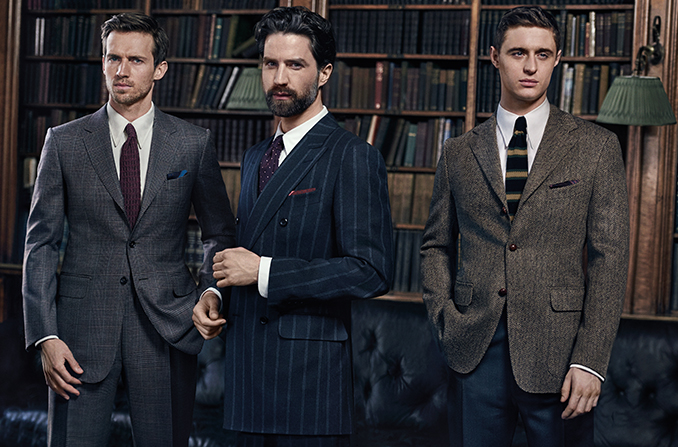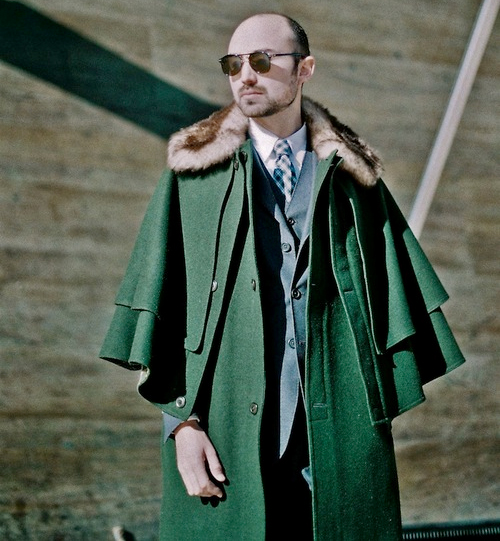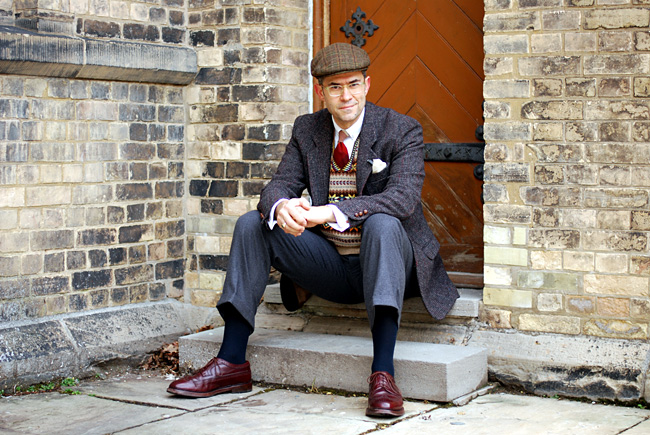
It used to be that only women faced a seasonal assault of fashion must-haves. Men were free to wear what they’d worn for years without fear of being too out of date. Sadly, however, the hyper-consumerist model of fashion has spread to menswear and guys are now being regularly told – in fashion magazines and on the web – that what they wore last year is tired and dated and they must update their look.
I usually rail against trends but there’s a twist this fall, especially for me. A number of fashion houses are presenting looks and accessories I’m actually on side with like fedoras, which are going to be hard to convince most guys to wear, or even more difficult, capes. Yes, capes. I know that sounds like typical fashion absurdity, things that appear on runways in Milan that people never wear on the streets. But many designers and menswear brands are introducing capes into their fall fashion lines confident that men will actually wear them (and not just the dudes at Pitti Uomo, pictured below). Even Antonio Banderas is right now enrolled in fashion school so he can start his own menswear line that will feature capes.
![[Courtesy GQ]](https://thehogtownrake.com/wp-content/uploads/2024/07/8c7b6-capes.png?w=545&h=458)

So you’re probably not going to see me or many men in capes this fall. They are way too imposing for most guys; they make too much of a statement. And most guys simply don’t want to draw that much attention to themselves. And while I appreciate understated elegance, so much of what guys wear today – hoodies and jeans and plaid shirts – is far from elegant and in fact so boring I’d love to see more risk taking.
However, there is another fall fashion trend you will see a lot of, especially on me: the professorial look. Think tweed jackets with elbow patches, rollneck sweaters and corduroy pants. It’s the mid-century, Ivy-League look, like Robin Williams in “Dead Poets Society” or Professor Indiana Jones when he’s not fighting Nazis or running from snakes. In other words, what I normally wear each and every autumn. But here’s the thing: the last thing I want people to think is that I’m some trendy hipster who will just move on to the next look once this is out of fashion.
Then again, I don’t think that’s very likely. This season’s trend is more “faux” professor: the pants are cut tight and short and the jackets come with the elbow patches already sewn on. And this is another reason why I don’t like trends: that dishevelled, lived-in look has to be earned, you don’t just buy it. It takes years of sitting at a typewriter or smoking a pipe in your study to wear away your elbows and fray your cuffs.

My dislike of trends goes deeper than the misguided search for authenticity the “professorial look” symbolizes: trends represent everything that is wrong with mass-produced clothing today. They encourage you to buy, buy, buy and then throw things away when they are no longer in fashion. And trends push people to extremes: you either follow fashions closely or pay no attention whatsoever to clothes.
There is a third way, a way to care about your wardrobe without being trendy: buy well-made, quality items that will last. Think about your clothes like your grandparents or great-grandparents did – learn how to dress well for various occasions and take care of your clothes. One tactic, as Giada Fiorindi said so well, is to spend more money than you want to so that you’re only buying something you actually need. That also means you are not contributing to the endemic of low-wage overseas workers making disposable clothes. However, all of this means the clothes have to be relatively classic so they don’t go out of fashion in the next few years.
But what if you actually want to look fashionable, want to look “on trend?” Like I said, I wear tweeds and fedora hats and would love a cape, so by all means, introduce items into your wardrobe if they suit you. But not because they are trendy. You need to control your wardrobe, not the other way around. This issue, and so much that I write about, is really about the difficult mission of finding your own sense of style and not just following what others are doing. And that is hard work. It’s going to take introspection and some trial and error – so perhaps try rocking a vintage cape before you spend $700 on a new one.






Leave a comment